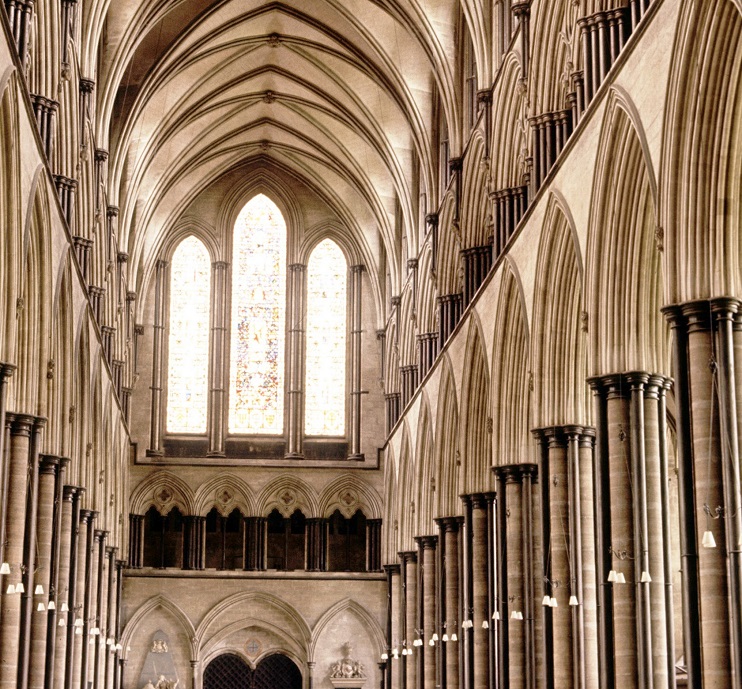Master builder

|
[edit] Introduction
The term ‘master builder’ has been in use since the early 17th century but the profession itself has existed since humans started to build shelters.
Traditionally, the term referred to a person who undertook many or all of the professions that were required to build a house or other small structure. Master builders would have the knowledge and/or skills of an architect, structural engineer, carpenter, roofer and other trades needed to construct a building.
[edit] Historical usage of the term ‘master builder’
Since master builders have existed since people began building, they were active before the various skills were separated into architect, structural engineer, surveyor etc and the growth of the respective professions. Master builders were multi-skilled craftspeople who were either competent to physically carry out the works themselves or else were knowledgeable enough to instruct and direct other trades to complete the work.
In medieval England (5th – 15th century), the cruck frame was a crude way to construct a house, using large curved timbers that would form the roof and walls. The carpenter as master builder would often be responsible for the structural integrity of the building and direct the other crafts such as walling and rendering the structure to make it watertight.
The cathedrals of the Gothic age (11th – 15th centuries) were designed by master builders (sometimes called 'master masons') who had architectural and structural knowledge that had been gained first as apprentices then from experience. They could design the architecture and knew what its structural requirements and limitations were. It may be because one person was responsible for the design that the architecture and structure of Gothic cathedrals is harmonious and inseparable.
These multi-skilled craftspeople whose knowledge was often founded on either their mistakes or the mistakes of others (usually structural collapses of some description), tended to be 'anonymous': they might lead a peripatetic life, travelling from one city to the next, designing and directing the construction of a cathedral, enjoying great patronage and prestige, then moving on to the next project elsewhere.
In Victorian England, some master builders may have been responsible for the design and construction of buildings, whether a house, school or church, but others may also have been guided by plans prepared by architects. In such cases, the master builder would usually have been responsible for everything apart from the design.
Later in the early-mid 20th century, the term master builder was sometimes applied to an architect who possessed a theoretical knowledge of engineering and the fundamentals of building construction.
Today, the term ‘master builder’ is still in use by builders with an all-encompassing knowledge of building design and construction which they can apply to the construction of buildings, whether that is undertaking the work themselves or directing trades (who may be in their direct employment) to complete the work.
The UK-based Federation of Master Builders is a trade association that was established in 1941 to protect the interests of small- and medium-sized (SME) construction firms. It offers a range of services to help members grow and improve their businesses.
[edit] Related articles on Designing Buildings
- Architect.
- British Property Federation BPF.
- Builder.
- Building Site to Boardroom (BS2B).
- Construction contractor.
- Construction industry institutes and associations.
- Engineer.
- Federation of Master Builders.
- Flint.
- FMB - Programme for Government.
- Interview with FMB.
- Masonry chimney.
- Types of construction organisations.
Featured articles and news
Government consultations for the summer of 2025
A year of Labour, past and present consultations on the environment, the built environment, training and tax.
CMA competitiveness probe of major housing developers
100 million affordable housing contributions committed with further consultation published.
Homes England supports Greencore Homes
42 new build affordable sustainable homes in Oxfordshire.
Zero carbon social housing: unlocking brownfield potential
Seven ZEDpod strategies for brownfield housing success.
CIOB report; a blueprint for SDGs and the built environment
Pairing the Sustainable Development Goals with projects.
Types, tests, standards and fires relating to external cladding
Brief descriptions with an extensive list of fires for review.
Latest Build UK Building Safety Regime explainer published
Key elements in one short, now updated document.
UKGBC launch the UK Climate Resilience Roadmap
First guidance of its kind on direct climate impacts for the built environment and how it can adapt.
CLC Health, Safety and Wellbeing Strategy 2025
Launched by the Minister for Industry to look at fatalities on site, improving mental health and other issues.
One of the most impressive Victorian architects. Book review.
Common Assessment Standard now with building safety
New CAS update now includes mandatory building safety questions.
RTPI leader to become new CIOB Chief Executive Officer
Dr Victoria Hills MRTPI, FICE to take over after Caroline Gumble’s departure.
Social and affordable housing, a long term plan for delivery
The “Delivering a Decade of Renewal for Social and Affordable Housing” strategy sets out future path.
A change to adoptive architecture
Effects of global weather warming on architectural detailing, material choice and human interaction.
The proposed publicly owned and backed subsidiary of Homes England, to facilitate new homes.
How big is the problem and what can we do to mitigate the effects?
Overheating guidance and tools for building designers
A number of cool guides to help with the heat.
The UK's Modern Industrial Strategy: A 10 year plan
Previous consultation criticism, current key elements and general support with some persisting reservations.
Building Safety Regulator reforms
New roles, new staff and a new fast track service pave the way for a single construction regulator.
























